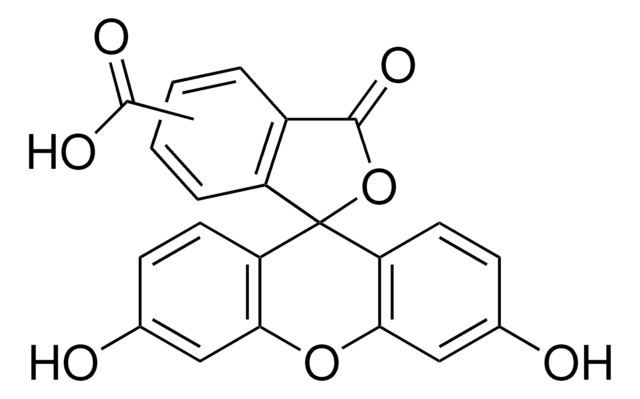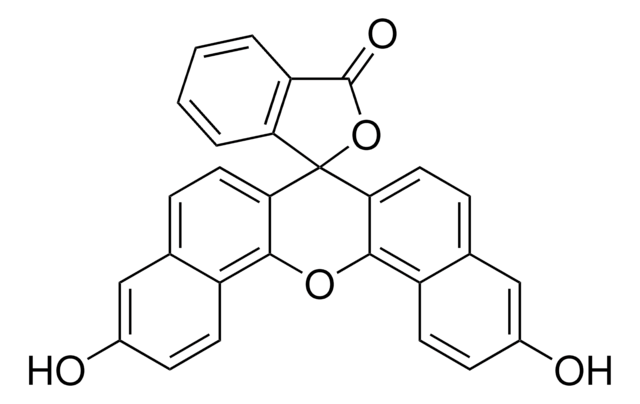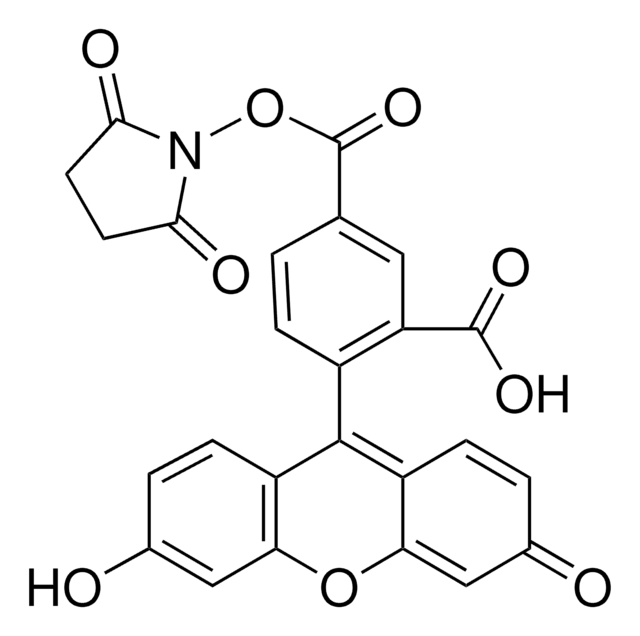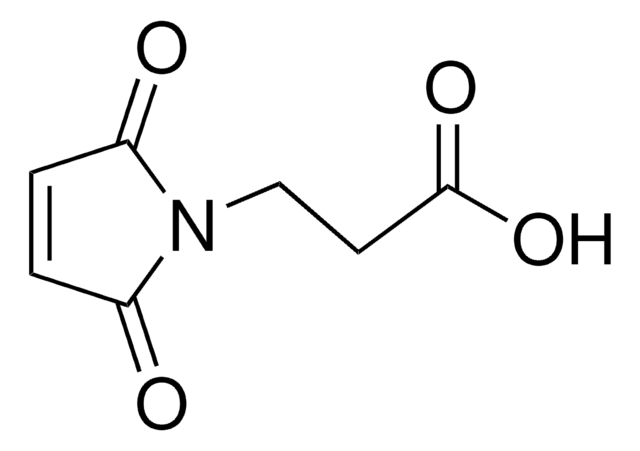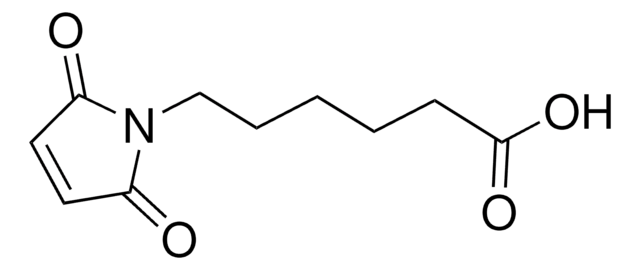21932
5(6)-Carboxynaphthofluorescein
BioReagent, suitable for fluorescence, ≥90% (HPLC)
About This Item
Productos recomendados
Línea del producto
BioReagent
Nivel de calidad
Ensayo
≥90% (HPLC)
Formulario
solid
pKa
7.6
fluorescencia
λex 512 nm; λem 567 nm (acid/neutral)
λex 598 nm; λem 668 nm (basic)
idoneidad
suitable for fluorescence
cadena SMILES
OC(=O)c1ccc2c(c1)C(=O)OC23c4ccc5cc(O)ccc5c4Oc6c3ccc7cc(O)ccc67.OC(=O)c8ccc9C(=O)OC%10(c%11ccc%12cc(O)ccc%12c%11Oc%13c%10ccc%14cc(O)ccc%13%14)c9c8
InChI
1S/2C29H16O7/c30-17-4-6-19-14(11-17)1-9-23-25(19)35-26-20-7-5-18(31)12-15(20)2-10-24(26)29(23)22-8-3-16(27(32)33)13-21(22)28(34)36-29;30-17-4-7-19-14(11-17)2-9-22-25(19)35-26-20-8-5-18(31)12-15(20)3-10-23(26)29(22)24-13-16(27(32)33)1-6-21(24)28(34)36-29/h2*1-13,30-31H,(H,32,33)
Clave InChI
ANUHNEJUELPITC-UHFFFAOYSA-N
Aplicación
¿No encuentra el producto adecuado?
Pruebe nuestro Herramienta de selección de productos.
Código de clase de almacenamiento
11 - Combustible Solids
Clase de riesgo para el agua (WGK)
WGK 3
Punto de inflamabilidad (°F)
Not applicable
Punto de inflamabilidad (°C)
Not applicable
Equipo de protección personal
Eyeshields, Gloves, type N95 (US)
Elija entre una de las versiones más recientes:
¿Ya tiene este producto?
Encuentre la documentación para los productos que ha comprado recientemente en la Biblioteca de documentos.
Nuestro equipo de científicos tiene experiencia en todas las áreas de investigación: Ciencias de la vida, Ciencia de los materiales, Síntesis química, Cromatografía, Analítica y muchas otras.
Póngase en contacto con el Servicio técnico